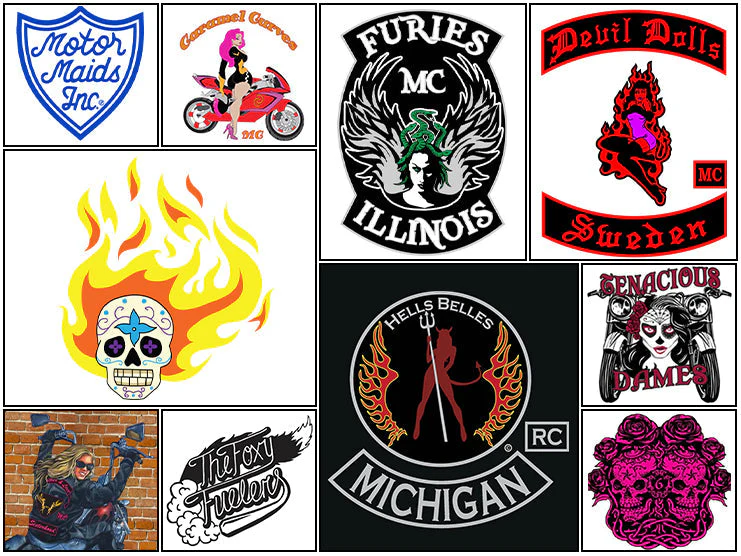Table of Content
Riding a motorcycle is more fun if you can feel the engine rumbling through the handlebars, seats, and pegs. However, riders might experience motorcycle engine vibrations that are a little too intense. Motorcycle engines suffering excessive vibrations can result in discomfort, safety issues, and damaged components.
But what causes excessive motorcycle engine vibrations and how do you fix this issue?
1. Difference Between Rumbling and Vibrating Motorcycle Engines
Rumbling Motorcycle Engines
Rumbling engines are typically associated with V-twin engines. V-twin engines are built with cylinders arranged in a V-shape with a crankshaft at the bottom connecting the two cylinder banks.
For V-twin engines, the two cylinders are typically offset, with one cylinder positioned slightly ahead of the other. This offset is known as the "crankpin offset." This design provides a firing order that contributes to the rumble of the engine.
When the engine is running, the pistons in the cylinders move up and down, which causes the crankshaft to rotate. As the crankshaft rotates, torque is transferred to the motorcycle's wheels and propels the bike forward.
The V-twin engine is known for its torque, low-end power, and comfort, ensuring a relaxing riding experience when traveling at high speeds. The V-twin engine’s rumbling sound is also a vital part of its appeal.
Vibrating Motorcycle Engines
Vibrations in a motorcycle engine are due to the pistons' reciprocating motion and the crankshaft's rotational motion. You can feel vibrations in various motorcycle parts, such as the handlebars, foot pegs, and seat. While some level of vibration from the motorcycle engine is normal, excessive vibrations can cause discomfort and may indicate a problem with the engine.
Always try to identify the underlying cause of excessive engine vibrations. A mechanic can inspect the engine and related components to identify issues and recommend appropriate repairs or replacements. Sometimes, minor adjustments or maintenance may be sufficient to reduce or eliminate excessive vibrations. In severe cases, more extensive repairs may be necessary. Regular maintenance and inspections can prevent excessive engine vibrations and ensure the motorcycle runs smoothly.
2. Reasons Behind Motorcycle Engine Vibrations and How to Fix
2.1 Misaligned or Unbalanced Engine Components
Misaligned or unbalanced components like the crankshaft, pistons, and connecting rods can cause the engine to vibrate excessively. Over time, wear and tear can also contribute to these issues.
Solution:
Check for misaligned or unbalanced components and correct any misalignments.
2.2 Worn or Loose Engine Mounts
The engine is mounted to the motorcycle's frame using rubber mounts, which can become worn out or loose. An unsecured engine can result in increased vibrations.
Solution:
Inspect the engine mounts for any signs of damage and tighten them if necessary. If the mounts are worn out, they may need to be replaced.
2.3 Improper Fuel/Air Mixture
A fuel/air mixture that is too lean or too rich can cause the engine to vibrate. A lean mixture can cause the engine to overheat, while a rich mixture can cause incomplete combustion and excess fuel to enter the exhaust system.
Solution:
You can adjust the mixture by cleaning the air filter (If the air filter is clogged or dirty, the engine may not receive enough air to run smoothly. This can cause the engine to vibrate or run roughly), adjusting the carburetor, or reprogramming the fuel injection system (Problems with the fuel system, such as a clogged fuel filter or a malfunctioning fuel injector, can cause the engine to run roughly and vibrate) to ensure that the engine has the correct fuel/air mixture.
2.4 Faulty Spark Plugs
Faulty spark plugs can cause the engine to misfire, decrease power, reduce fuel efficiency, and rough idling. If the gap between the electrodes on the spark plug is too wide or too narrow, the ignition may not be consistent or strong enough to fully ignite the air-fuel mixture. This can cause the engine to run roughly and vibrate.
Solution:
You can replace the spark plugs to help reduce vibrations and improve engine performance.
2.5 Engine Mechanical Issues
Mechanical issues, such as worn bearings or other internal engine components, can cause the engine to vibrate excessively. These issues may require extensive repairs or replacing the engine parts.
Solution:
Inspect for any worn or damaged components. Depending on their conditions, they must be repaired or replaced.
2.6 Ideal Speed
Riding at high speeds for a long time might cause engine vibrations. When the throttle is closed, the engine's speed is mainly “ideal speed”. If the idle speed is set too low, the engine will not be able to run smoothly and will vibrate.
Solution:
Adjust the idle speed based on the manufacturer's specifications.
2.7 Engine Ignition Timing
Ignition timing refers to the timing of the spark that ignites the air-fuel mixture in the combustion chamber of an engine. If the ignition timing is off, then there will be a quick buzz and high vibrations coming from the engine. There can be different reasons for vibration such as
Late ignition timing: If the ignition timing is set too late, the air-fuel mixture may not be fully burned by the time the exhaust valve opens. This can cause a portion of the unburned mixture to ignite in the exhaust system, leading to a sudden increase in pressure that can cause engine vibration.
Early ignition timing: If the ignition timing is set too early, the pressure in the combustion chamber may peak too early in the piston's upward stroke, causing the piston to push against the cylinder wall before it reaches the top of the stroke. This can cause the engine to vibrate.
Uneven ignition timing: If the ignition timing is not consistent across all cylinders, the pressure in the combustion chambers may not be balanced, causing the engine to vibrate.
Solution:
Check and adjust the ignition timing based on the manufacturer's specifications.
2.8 Bad-Quality Fuel
Low-quality fuel may include contaminants that could become trapped in the engine and damage the engine components. Also, when the engine is cold, bad fuel may not let the engine run smoothly until it reaches its optimal operating temperature. Until then, the engine may vibrate or run roughly.
Solution:
Always use high-quality fuel that meets the manufacturer's specifications. Check whether synthetic oil vs conventional oil suits best to your motorcycle.
2.9 Maintenance and Inspections
The specific cause of excessive engine vibrations can vary depending on the motorcycle and riding conditions. Therefore, it's important to have a qualified mechanic inspect the motorcycle and diagnose the issue before making repairs.
Regular maintenance checks and inspections can help you identify and address issues before they become more serious. If excessive engine vibrations still persist, take the motorcycle to a mechanic for further inspection and diagnosis.
3. FAQ
3.1 How Much Engine Vibration is Normal?
It is normal for a motorcycle engine to produce some vibrations due to combustion. The amount of vibration depends on various factors, such as the engine's size and type, the motorcycle frame, and the road conditions.
Modern motorcycles are designed to minimize engine vibration as much as possible. However, some motorcycles may vibrate more than others, especially if they have high-performance or single-cylinder engines. Riders may also experience more vibrations if riding at high speeds or on rough roads.
As a rule of thumb, it is acceptable if the engine vibrations are mild, do not cause discomfort, or affect the motorcycle's performance. However, if the vibrations are excessive or cause discomfort, this may indicate underlying mechanical issues that require attention.
3.2 Why Do Low RPMs Cause Vibrations?
Low RPMs can cause vibrations in a motorcycle engine because it is not operating within the desired speed range, resulting in poor engine performance. Motorcycle engines are designed to operate within a specific RPM range, where they produce the most power and run smoothly. If the RPM is too low, the engine can struggle to produce enough power, leading to vibrations that you can feel in the motorcycle frame, handlebars, or foot pegs.
In a four-stroke engine, the combustion process produces power in four distinct stages: intake, compression, power, and exhaust. If the engine is not spinning fast enough, incomplete combustion may occur, which can cause the engine to vibrate excessively. They can also cause the motorcycle to stall at low speeds or when pulling away from a stop.
Additionally, running the engine at low RPMs for extended periods can damage the engine due to not being lubricated or cooled, resulting in excessive wear and tear. Running the engine at low RPMs can also damage the motorcycle's transmission, putting extra stress on the gears and bearings.
3.3 How to Reduce Handlebar Vibrations on a Bike?
Handlebar vibrations can be uncomfortable and cause fatigue and numbness in the hands and arms. Here are some ways to reduce handlebar vibrations:
Check the Handlebar Grips:
Since worn-out handlebar grips can cause vibrations, replace the grips with thicker or softer grips with better shock absorption.
Adjust the Handlebar Position:
Adjust the handlebar position by rotating them to a different angle or changing their height to find the most comfortable position.
Add Handlebar Weights:
You can use aftermarket bar-end weights or add sand or lead shot inside the handlebars,.
Check the Front Suspension:
Check the front suspension for any signs of wear and tear, and replace any worn or damaged components.
Realign the Wheels:
Take your motorcycle to a mechanic or tire shop to help realign the wheels.
Reduce Engine RPM:
Running the engine at high RPMs can cause more vibration to be transferred to the handlebars. Ride at a RPM within the recommended range.
Use Anti-Vibration Mounts:
Some manufacturers make anti-vibration mounts that you can install between the handlebars and the motorcycle frame to absorb vibrations.
Note: Taking these steps can help reduce handlebar vibrations and make your ride more comfortable and safer.
4. Conclusion
Though engine vibrations are normal, excessive vibrations may indicate an underlying issue. It could indicate worn or damaged engine components, unaligned wheels, etc. Excessive vibrations can cause discomfort and fatigue for the rider or damage the motorcycle. If you are experiencing excessive engine vibrations, it is best to have your motorcycle checked by you or a professional mechanic. Viking Bags brings you the best quality motorcycle parts and luggage bags, including saddlebags, sissy bar bags, tour packs, highway bars, backrests, sissy bars, seats, and handlebars.













Leave a comment
All comments are moderated before being published.
This site is protected by hCaptcha and the hCaptcha Privacy Policy and Terms of Service apply.